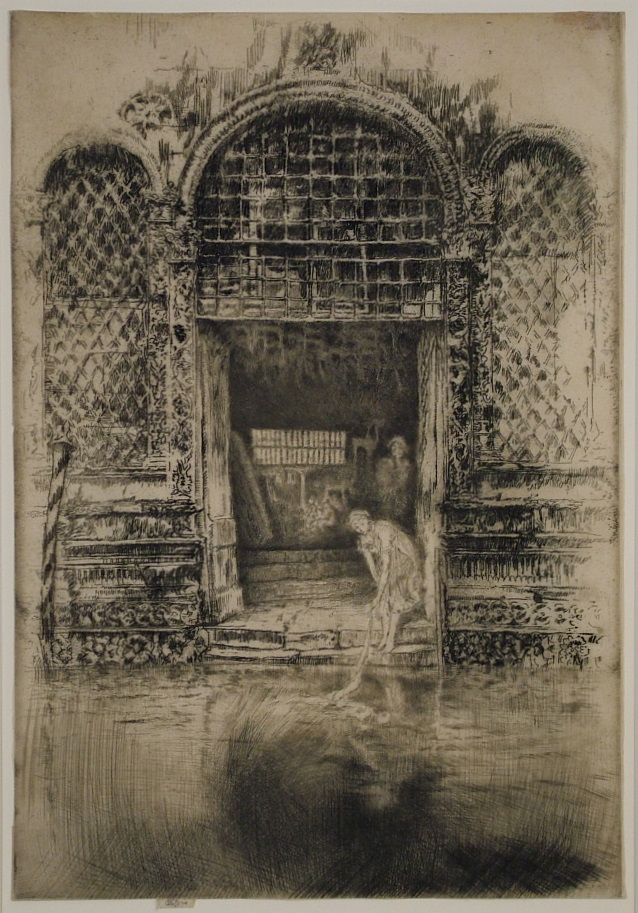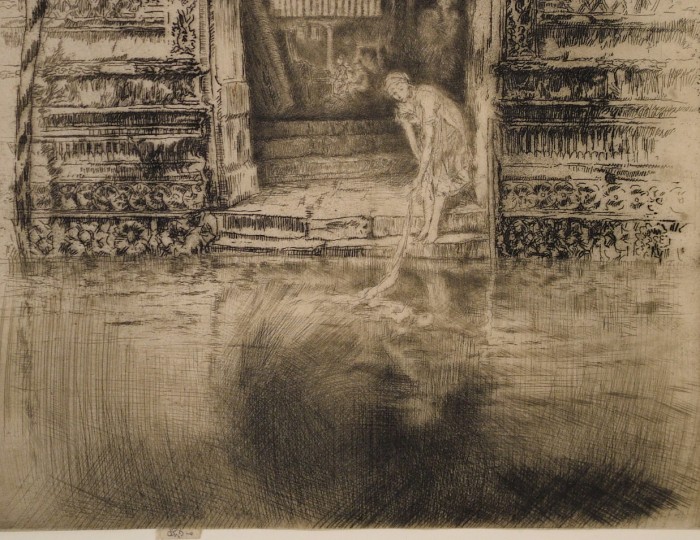The Doorway
James Whistler (1834-1903), The Doorway, drypoint, etching and roulette, 1879-80, signed with the butterfly on the tab and inscribed “imp”. Reference: Kennedy 188, seventh state (of 7); Glasgow 193, twenty (of 20). From the First Venice Set. In very good condition, trimmed by the artist around the plate mark except for the tab, printed on a simile Japon paper, 11 1/2 x 8 inches.
Provenance:
P. & D. Colnaghi & Co., London (their stock number in pencil on verso C. 335)
A very fine impression, printed in brown ink.
The passageway at the center of the architectural framing device is still partly open and a window allows some light to come in from behind into the darkened interior of the Pallazzo Gussoni on the Rio de la Fava. The rhythm of the windows, further accentuated by the changing of the orientation of the ironwork, makes the ornate architecture the manifest subject of this print.
This is Whistler print is most dramatically and fully conceived after a number of earlier states. The girl at the center of the composition, in the doorway, was re-worked progressively in the early states, but probably never completely resolved to the satisfaction of the artist, as suggested by his completely burnishing out the figure in Glasgow’s 17th state. He then re-drew the figure entirely, in drypoint, making her a bit smaller, with her features now rather clear and holding a thin cloth (as in the earliest states) in the water. In previous states Whistler left the area below the doorway relatively clear of etching or drypoint, allowing a space for plate tone and various wiping effects. In this late state he drew in dense networks of overlapping drypoint lines to dramatize the shadows of the doorway and the motions of the water on the canal; this technique presages the use of drypoint in the Amsterdam plates (see, for example, Pierrot, K. 407). The dramatic movement of the water thus contrasts with the stillness of the architecture, making this one of Whistler’s most engaging and fully realized compositions.

